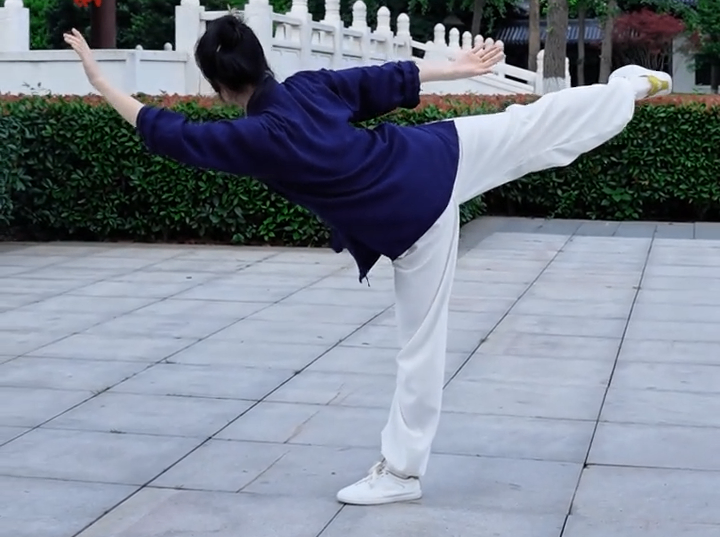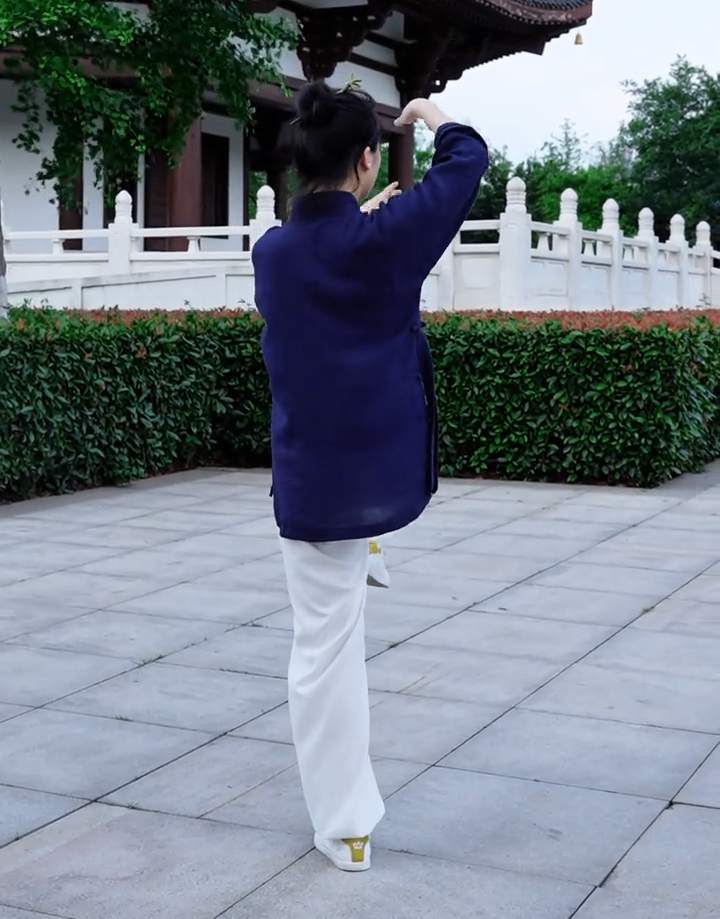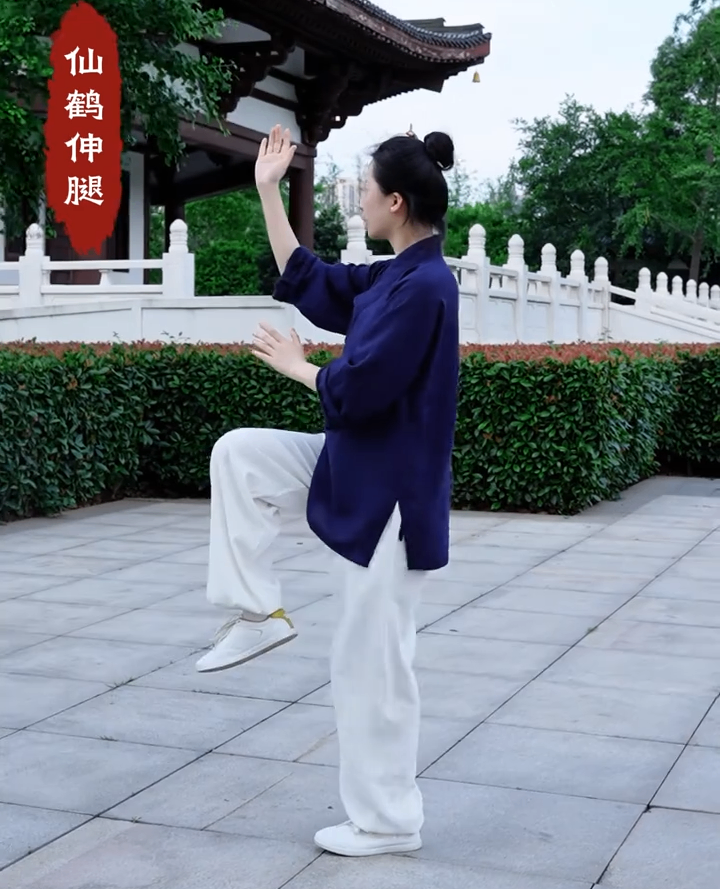Understanding Lower Back Pain and Its Causes
Lower back pain can stem from a variety of factors, including muscle strain, poor posture, or underlying medical conditions. Weakness in the core muscles, instability in the lower back, and imbalances in the body can all contribute to chronic discomfort. Over time, these issues can lead to more severe problems, such as herniated discs or sciatica. Addressing lower back pain requires a combination of strengthening, stretching, and mindfulness practices to restore balance and stability.
Yoga is a powerful tool for managing lower back pain because it combines physical postures (asanas), breathing techniques (pranayama), and meditation. These elements work together to improve flexibility, build strength, and reduce stress, all of which are essential for relieving lower back discomfort. Similarly, Taiyi Youlongquan, a traditional Daoist martial art, emphasizes fluid, dynamic movements that promote harmony between the body and mind. By incorporating both yoga and Taiyi Youlongquan into your routine, you can address the root causes of lower back pain and achieve long-term relief.

1. Cat-Cow Stretch (Marjaryasana-Bitilasana)
The Cat-Cow Stretch is a foundational yoga pose that helps improve flexibility, relieve tension in the lower back, and strengthen the core muscles. This pose is particularly effective for individuals with poor balance and core instability, as it encourages mindful movement and coordination.
How to Perform the Cat-Cow Stretch:
Starting Position : Begin on your hands and knees in a tabletop position. Align your wrists directly under your shoulders and your knees directly under your hips. Keep your head in a neutral position, looking downward.
Cat Pose (Marjaryasana) : Inhale deeply and slowly arch your back, lifting your head and tailbone toward the ceiling. Exhale as you round your spine, tucking your chin toward your chest and drawing your belly button toward your spine. This is the Cat Pose.
Cow Pose (Bitilasana) : On your next inhale, reverse the movement by arching your back again, lifting your head and tailbone. This time, focus on expanding your chest and dropping your shoulders away from your ears. This is the Cow Pose.
Flow Between the Poses : Continue to alternate between Cat and Cow poses, synchronizing your breath with the movement. Inhale for Cow Pose and exhale for Cat Pose. Perform this flow for 3 minutes per set.
Benefits of the Cat-Cow Stretch:
Improves Flexibility : This pose stretches the muscles of the lower back, hips, and neck, helping to relieve tension and stiffness.
Strengthens the Core : The controlled movement required for this pose engages the core muscles, promoting stability and reducing lower back strain.
Enhances Balance : By focusing on coordinated movement and breath, the Cat-Cow Stretch helps improve overall balance and body awareness.
2. Bridge Pose (Setu Bandha Sarvangasana)
The Bridge Pose is another excellent yoga pose for strengthening the core, improving balance, and relieving lower back pain. This pose targets the glutes, hamstrings, and lower back muscles, providing a comprehensive workout that addresses weakness and instability.
How to Perform the Bridge Pose:
Starting Position : Lie on your back with your knees bent and your feet flat on the floor, hip-width apart. Extend your arms alongside your body, palms facing down.
Lift Your Hips : Inhale deeply and slowly lift your hips off the floor, pressing your feet firmly into the ground. Engage your glutes and core muscles to maintain stability. Your body should form a straight line from your shoulders to your knees.
Hold the Pose : Once you’ve lifted your hips, hold the position for a few breaths. Focus on maintaining proper alignment and avoid arching your lower back excessively.
Lower Your Hips : Exhale and slowly lower your hips back to the starting position. Repeat this movement for 3 minutes per set.
Benefits of the Bridge Pose:
Strengthens the Core : This pose engages the deep core muscles, promoting stability and reducing lower back strain.
Improves Balance : By requiring controlled movement and focus, the Bridge Pose helps improve overall balance and coordination.
Relieves Lower Back Pain : The gentle stretch on the lower back muscles can help alleviate tension and discomfort.

Taiyi Youlongquan: Ancient Martial Arts for Modern Wellness
Taiyi Youlongquan, a traditional Daoist martial art, combines fluid, graceful movements with powerful, dynamic techniques. It is deeply rooted in the principles of Daoist养生 (Daoist养生), which emphasize harmony between the body, mind, and spirit. The three key movements—Xianhe Shentui, Liuxing Ganyue, and Panlong Wohu—offer a unique approach to strengthening the body, improving balance, and alleviating lower back pain.
1. Xianhe Shentui (Crane Stretching Legs)
The Crane Stretching Legs movement mimics the elegant, fluid movements of a crane. It is designed to improve flexibility, strengthen the lower back, and enhance overall coordination.
How to Perform Xianhe Shentui:
Starting Position : Stand with your feet shoulder-width apart, knees slightly bent. Place your hands on your hips, keeping your spine straight.
Stretching the Legs : Slowly shift your weight to one leg while lifting the other leg behind you, as if imitating a crane stretching its leg. Keep your lifted leg parallel to the ground and your toes pointed.
Flowing Movement : As you hold this position, gently swing your lifted leg from side to side, maintaining balance and control. Switch legs after 30 seconds and repeat.
Benefits of Xianhe Shentui:
Improves Flexibility : This movement stretches the hamstrings, lower back, and hip muscles, promoting greater range of motion.
Enhances Balance : By requiring focus and coordination, Xianhe Shentui helps improve overall stability.
Strengthens the Lower Back : The controlled lifting and swinging of the leg engage the lower back muscles, promoting strength and stability.
2. Liuxing Ganyue (Meteor Chasing the Moon)
The Meteor Chasing the Moon movement is a dynamic exercise that mimics the swift, fluid motion of a meteor moving across the sky. It is designed to improve agility, coordination, and overall energy flow.
How to Perform Liuxing Ganyue:
Starting Position : Stand with your feet shoulder-width apart, knees slightly bent. Place your hands in a prayer position in front of your chest.
Swift Movement : Quickly step forward with one foot, transferring your weight to the front leg. As you do so, extend your arms forward, imitating the motion of a meteor moving through space.
Flowing Transition : Shift your weight back to the starting position and repeat the movement with the other leg. Perform this exercise for 2 minutes per set.
Benefits of Liuxing Ganyue:
Improves Agility : This movement enhances coordination and quickness, making it an excellent exercise for overall fitness.
Enhances Energy Flow : By focusing on fluid, dynamic movements, Liuxing Ganyue promotes the circulation of energy (qi) throughout the body.
Strengthens the Core : The quick, controlled movements engage the core muscles, promoting stability and reducing lower back strain.
3. Panlong Wohu (Coiling Dragon, Crouching Tiger)
The Coiling Dragon, Crouching Tiger movement combines the power of a coiling dragon with the stability of a crouching tiger. It is designed to strengthen the lower back, improve balance, and promote overall strength.
How to Perform Panlong Wohu:
Starting Position : Stand with your feet shoulder-width apart, knees slightly bent. Place your hands on your hips, keeping your spine straight.
Coiling Motion : Slowly twist your torso to one side, engaging your core muscles and lifting one arm overhead. As you twist, imagine yourself as a coiling dragon, full of power and energy.
Crouching Position : Transition into a crouching position, bending your knees and lowering your center of gravity. As you do so, bring your hands in front of your body, imitating the stance of a crouching tiger.
Flowing Movement : Alternate between the coiling dragon and crouching tiger positions, maintaining a steady rhythm and focus. Perform this exercise for 2 minutes per set.
Benefits of Panlong Wohu:
Strengthens the Lower Back : The coiling motion engages the lower back muscles, promoting strength and stability.
Improves Balance : By requiring focus and control, Panlong Wohu helps improve overall balance and coordination.
Enhances Power : This movement promotes the development of internal strength, making it an excellent exercise for overall fitness.

Combining Yoga and Taiyi Youlongquan for Holistic Wellness
By combining yoga stretches for lower back pain with the dynamic movements of Taiyi Youlongquan, you can create a comprehensive fitness routine that addresses the root causes of lower back discomfort. Yoga provides the foundation for flexibility, strength, and mindfulness, while Taiyi Youlongquan offers a unique approach to improving agility, coordination, and energy flow.
To incorporate these practices into your daily routine, start with 15-20 minutes of yoga stretches, focusing on the Cat-Cow Stretch and Bridge Pose. Follow this with 10-15 minutes of Taiyi Youlongquan movements, such as Xianhe Shentui, Liuxing Ganyue, and Panlong Wohu. Over time, you can gradually increase the duration and intensity of your practice to achieve greater results.
Conclusion
Lower back pain is a common issue that can significantly impact your quality of life. However, with the right approach, you can address this problem and regain control of your body. Yoga stretches, such as the Cat-Cow Stretch and Bridge Pose, provide effective solutions for relieving tension, strengthening the core, and improving balance. Additionally, the dynamic movements of Taiyi Youlongquan offer a unique way to enhance agility, coordination, and overall wellness.
By combining these practices, you can create a holistic approach to managing lower back pain and achieving long-term relief. Remember, consistency is key, and with time and patience, you’ll notice significant improvements in your physical health and overall well-being. Start your journey toward a pain-free, balanced body today!



